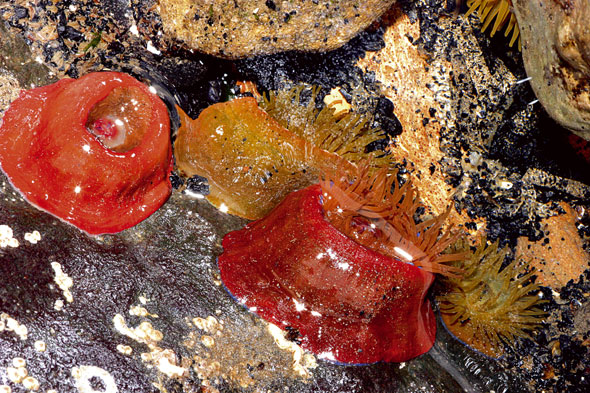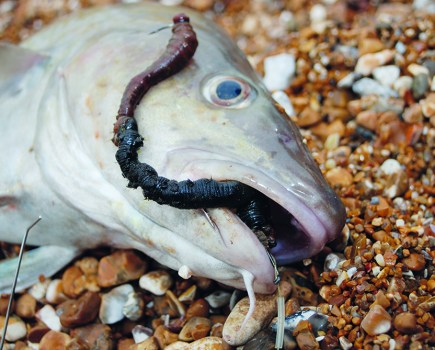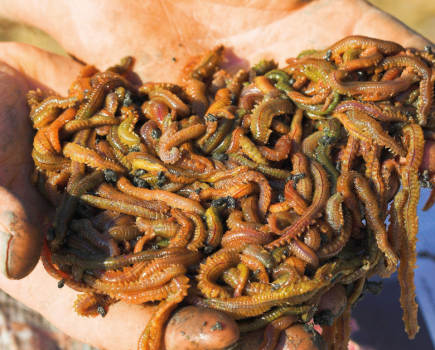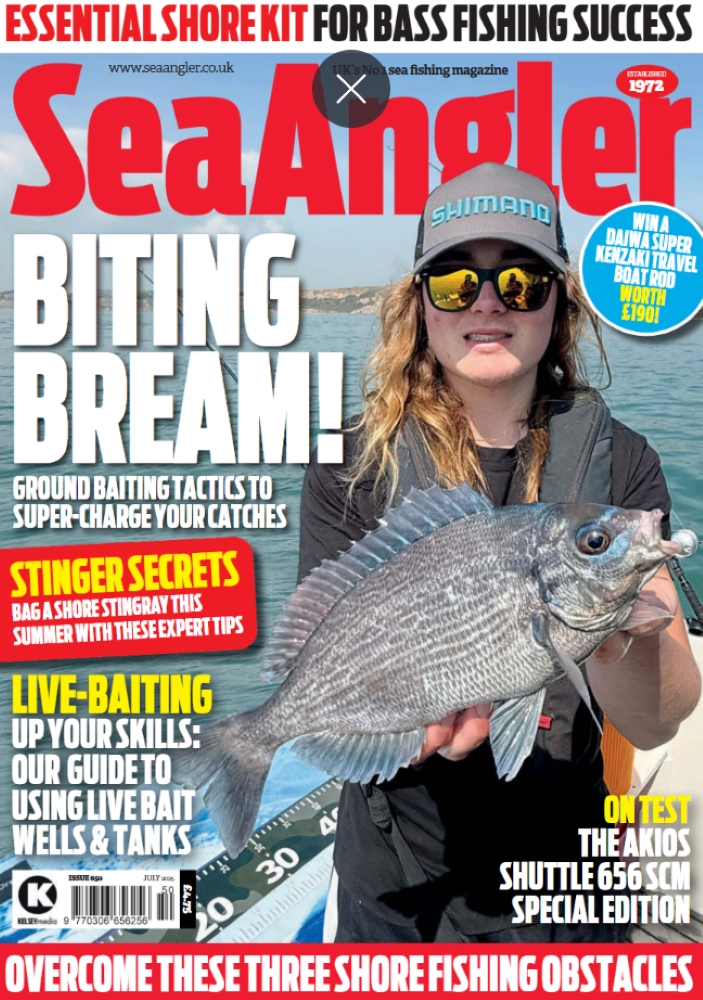How many of you have looked at anemones clinging to rocks and thought they look rather attractive? I bet there aren’t many of you who have considered putting one on your hook.
They have been given some rather unflattering names, such as parp, suker and gumboils. Here I’m interested in the small beadlet anemones found clinging to rocks at low tide.
There are about a dozen species found around our shoreline and the beadlet is the most widespread. In a bid to camouflage themselves against the rocks their basic colours are red and green, although you might see variations with yellow stripes and dots. These two colours of anemone are the ones used as fishing bait.
The red one is the most obvious to see and is found inhabiting the ground further up the shoreline, while the yellow version tends to be a bit harder to spot and inhabits the lower shore. If you see them in rock pools you might find them with their tentacles extended, which they use either to sting prey or to fight off other anemones.
The only fish known to actively feed on them are certain species of blennies that inhabit rock pools, but the usually marauding crabs steer clear of them.
If you have not heard of them, try asking some of the older generation of anglers because they were a popular bait in the days when there were plenty of cod.
They were widely used on the commercial longlines as a cod bait off the North East coast many decades ago. I can remember seeing lots of them in the stomach contents of cod after a good north-easterly sea had washed them off the rocks, so the cod obviously feed on them at certain times.
I remember, albeit rather reluctantly at the behest of an older angler, using the ones out of a cod’s stomach as bait but I have no recollection of actually catching anything.
It seems anemones must have been a popular and successful bait because a lot of the older anglers and retired commercial fishermen in the North East remember using them.
There are varied accounts of how these were used in the past. Some left them in a bucket for a few days to go ripe and then used them from the rock edges when trying for cod out of the weed beds. Others say that you should tie several onto a hook to make one big bait, or use one or two smaller ones to tip off a worm bait.
Several older anglers revealed that the best method was to use the smaller red ones, and/or sections of the bigger yellow ones in conjunction with a big mussel bait.
They tied it all onto the hook – they used wool at the time because there was no elastic thread then – and tipped this with a bit of tougher parp and, in the depths of an old angler’s memories, cod were virtually guaranteed.
When anemones are found in a fish’s stomach they resemble a small doughnut because the inner soft tissue, where the tentacles and stomach of the anemone should be, have gone.
Perhaps they are washed out in heavy seas rather than being digested by the fish, so I assume that the main tougher outer body of an anemone is the more edible part.
There is no reason why they should not catch fish now, but I doubt there is a single angler who would use these as bait today, never mind risking ridicule by actually being seen doing so.
Whether they will take any fish other than cod from the north-east shoreline is unknown. However, as with any unusual bait, a bit of experimentation is required to find out if they are actually productive in a particular area.
I can see the attraction of mixing them with mussel baits and there is the possibility of using them in a peeler crab cocktail, but you might have to wait a long time in today’s relatively cod-free seas to catch a cod on parp by itself.
If anyone knows any different I will be willing to be re-educated, but in the meantime I am going to try some small pieces on tiny Aberdeen hooks to see if any flatfish species will take them. I might just try some in bigger cocktail baits this coming winter.
How to prepare your parp bait
Preparing them seems easy. I cut a few from the rocks with a sharp knife, slice them in half and tie a few onto a hook. They are surprisingly tough and juicy. Despite having tentacles that sting their prey they will not sting you, the tentacles just feel sticky, so don’t worry about picking them up. I found a few bigger ones that I them into sections to make a cocktail bait with mussels and, I have to say, it looked quite attractive.

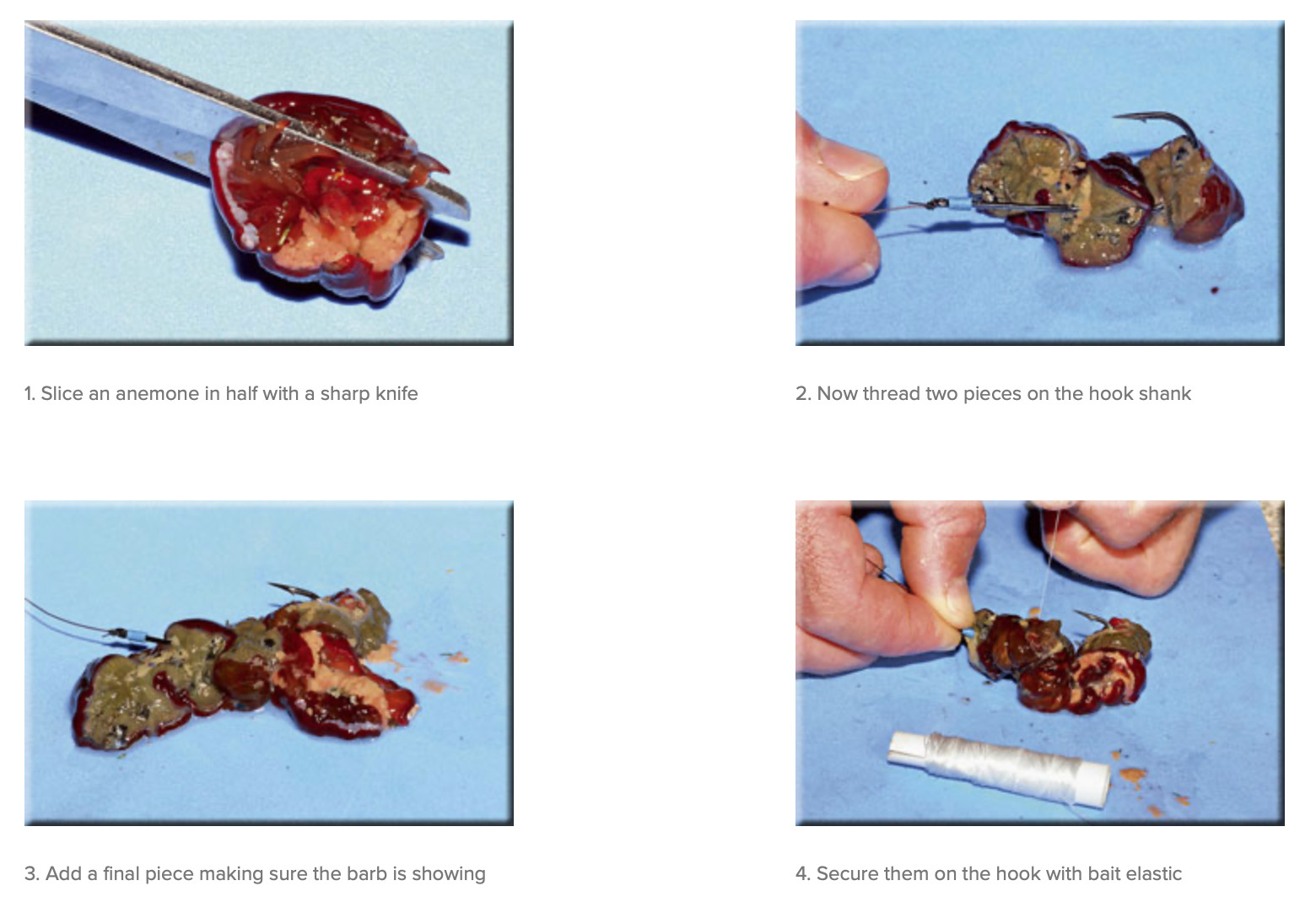
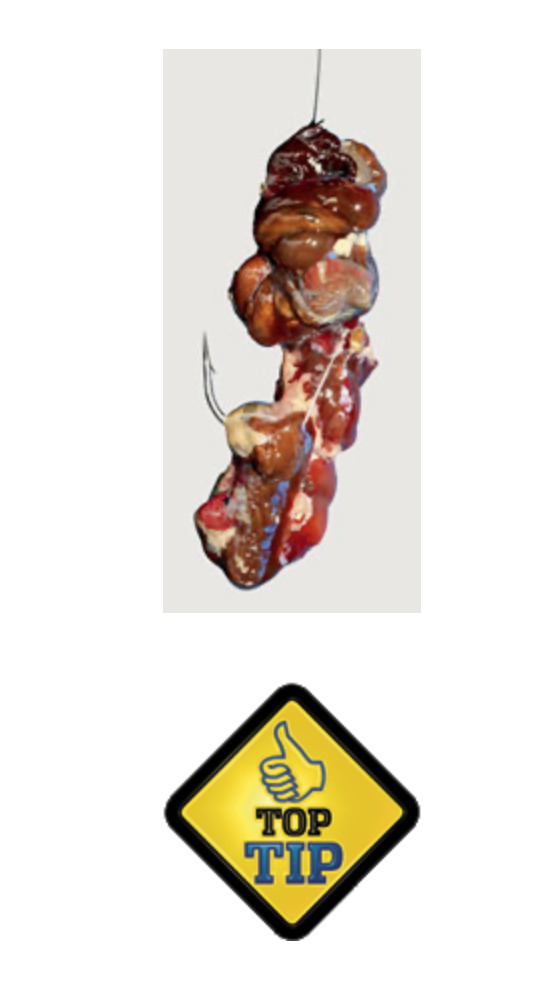
Old-timers say the smaller red anemones, and/or sections of the bigger yellow ones should be used with a big mussel bait.

